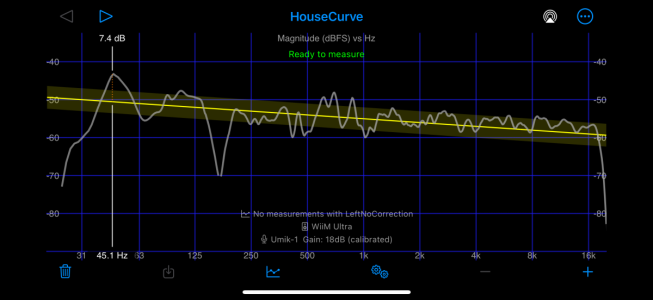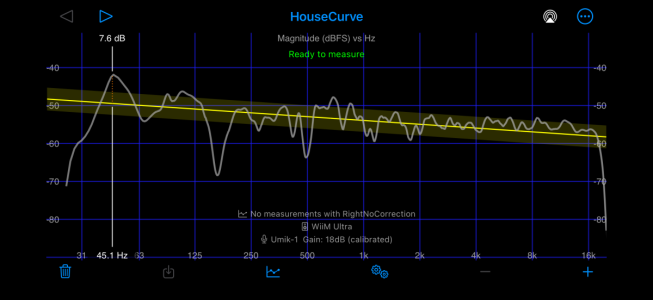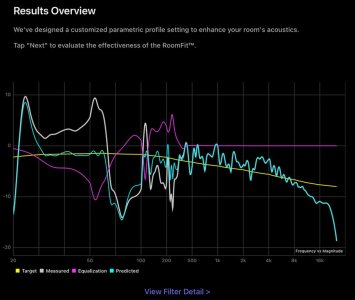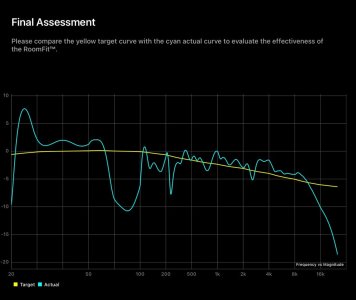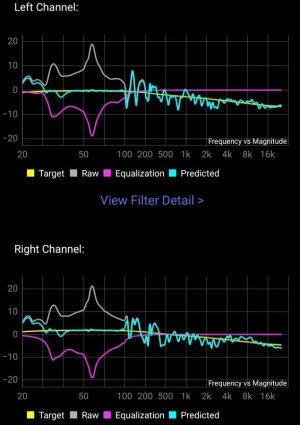EddNog
Major Contributor
I ask for Harman, it gives me this (I used red to mark the resulting curve based on its automatic correction algorithm) when setting correction range up to 250Hz:
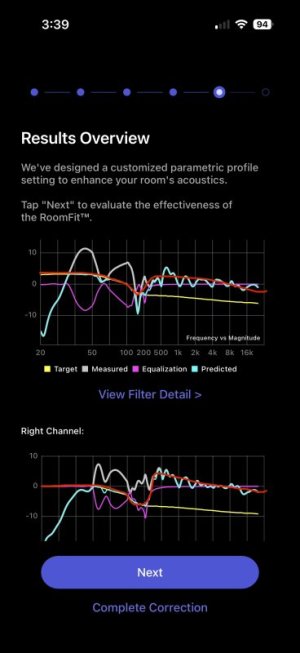
Hilariously bad. This worked better months ago the last time I tried it. Whatever, “enhancements,” have been made seem to have broken it. These results are absolutely terrible and would completely wipe the bass. Better to just use no correction at all.
The algorithm is clearly failing to look at the average level of the curve and then properly aligning the Harman profile to the natural response above the correction cutoff. Look at the distance between the yellow and the blue lines to the right of 250Hz.
Am I supposed to turn down the speakers myself to manually align the blue and yellow? The system is not smart enough to realign these by itself?
-Ed

Hilariously bad. This worked better months ago the last time I tried it. Whatever, “enhancements,” have been made seem to have broken it. These results are absolutely terrible and would completely wipe the bass. Better to just use no correction at all.
The algorithm is clearly failing to look at the average level of the curve and then properly aligning the Harman profile to the natural response above the correction cutoff. Look at the distance between the yellow and the blue lines to the right of 250Hz.
Am I supposed to turn down the speakers myself to manually align the blue and yellow? The system is not smart enough to realign these by itself?
-Ed

